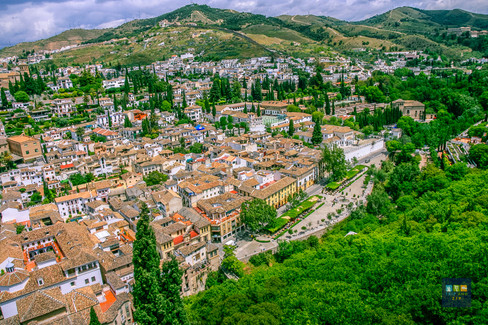The Alhambra: Where Moorish Elegance Meets Timeless Magic (III)
- Trip And Zip

- May 12, 2010
- 2 min read
Updated: May 18
Part 3: Echoes from the Alcazaba Walls
For anyone fascinated by medieval fortifications—and I count myself among them—the Alcazaba of the Alhambra is a compelling piece of military architecture. Long before the poetic Nasrid palaces or the lush gardens of the Generalife were conceived, this was the heart of the Alhambra: a fortress, built for defense and control.



The Alcazaba is the oldest part of the complex, dating back to the 9th century and later expanded by the Nasrids in the 13th. Its layout is compact but highly strategic. A trapezoidal plan, strong curtain walls, narrow access points, and elevated towers reveal a precise understanding of surveillance, protection, and terrain.
Unlike the decorative flourishes found deeper in the complex, here you find functionality—massive stone blocks, sloping walls, and narrow staircases built to slow down attackers and defend with advantage.



Walking through its inner courtyard, you can still see the foundations of soldier barracks and grain storage—reminders that this wasn’t just a lookout point but a self-contained military unit. Every corner serves a purpose.


The highlight is the Torre de la Vela (Watchtower), rising 26 meters high. Climbing it is a must. From the top, the entire city of Granada unfolds below—the Albaicín, the plains, the peaks of Sierra Nevada. It’s easy to see why this spot was chosen. The tower functioned as an early warning system, equipped with bells and guards, ensuring both the city and the palatial complex remained under watchful eyes.





Reaching the top of the Torre de la Vela offers one of Granada’s most breathtaking panoramas. The city opens up below—white façades of the Albaicín, the cathedral anchoring the skyline, and the vast plains fading into the distance.
What fascinates me most about Moorish military design in Andalusia is its balance, fortresses built not just for strength, but with precision, intelligence, and harmony with the land. Every wall and elevation in the Alcazaba feels deliberate, shaped by the terrain rather than imposed upon it.
The Alcazaba exemplifies this approach. It doesn’t rely on grandeur or ornament. Its power lies in its structure, with clean lines, solid ramparts, and strategic positioning. That quiet confidence is what I admire most. Moorish fortresses weren’t designed to impress from a distance, but to endure, to protect, and to express a deeper sophistication: one grounded in purpose, restraint, and control.



















Comments